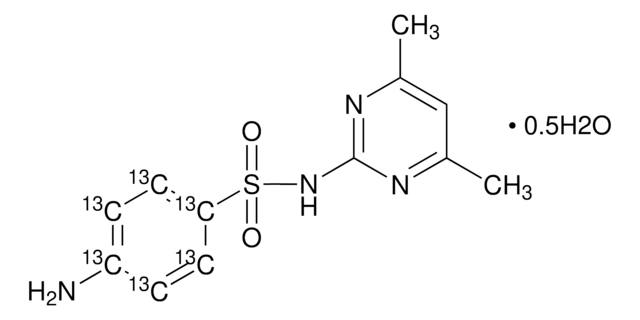861030
Auramine O
Dye content 85 %, certified by the BSC
Synonyme(s) :
4,4′-(Imidocarbonyl)bis(N,N-dimethylaniline) monohydrochloride, Basic Yellow 2, Pyoctaninum aureum
Sélectionner une taille de conditionnement
52,10 €
Sélectionner une taille de conditionnement
About This Item
52,10 €
Produits recommandés
Agence
certified by the BSC
Niveau de qualité
Forme
powder or chunks
Composition
Dye content, 85%
Technique(s)
microbe id | staining: suitable
Pf
>250 °C (dec.) (lit.)
Solubilité
95% ethanol: 1 mg/mL, clear to hazy, yellow to very deep yellow
λmax
370 nm
434 nm (2nd)
ε (coefficient d'extinction)
≥12000 at 249-255 nm in water at 0.005 g/L
≥15000 at 367-373 nm in water at 0.005 g/L
≥36000 at 429-435 nm in water at 0.005 g/L
Application(s)
diagnostic assay manufacturing
hematology
histology
Température de stockage
room temp
Chaîne SMILES
Cl[H].CN(C)c1ccc(cc1)C(=N)c2ccc(cc2)N(C)C
InChI
1S/C17H21N3.ClH/c1-19(2)15-9-5-13(6-10-15)17(18)14-7-11-16(12-8-14)20(3)4;/h5-12,18H,1-4H3;1H
Clé InChI
KSCQDDRPFHTIRL-UHFFFAOYSA-N
Vous recherchez des produits similaires ? Visite Guide de comparaison des produits
Catégories apparentées
Application
Actions biochimiques/physiologiques
Adéquation
Mention d'avertissement
Warning
Mentions de danger
Conseils de prudence
Classification des risques
Acute Tox. 4 Oral - Aquatic Chronic 2 - Carc. 2 - Eye Irrit. 2
Code de la classe de stockage
6.1C - Combustible acute toxic Cat.3 / toxic compounds or compounds which causing chronic effects
Classe de danger pour l'eau (WGK)
WGK 3
Faites votre choix parmi les versions les plus récentes :
Déjà en possession de ce produit ?
Retrouvez la documentation relative aux produits que vous avez récemment achetés dans la Bibliothèque de documents.
Les clients ont également consulté
Active Filters
Notre équipe de scientifiques dispose d'une expérience dans tous les secteurs de la recherche, notamment en sciences de la vie, science des matériaux, synthèse chimique, chromatographie, analyse et dans de nombreux autres domaines..
Contacter notre Service technique













